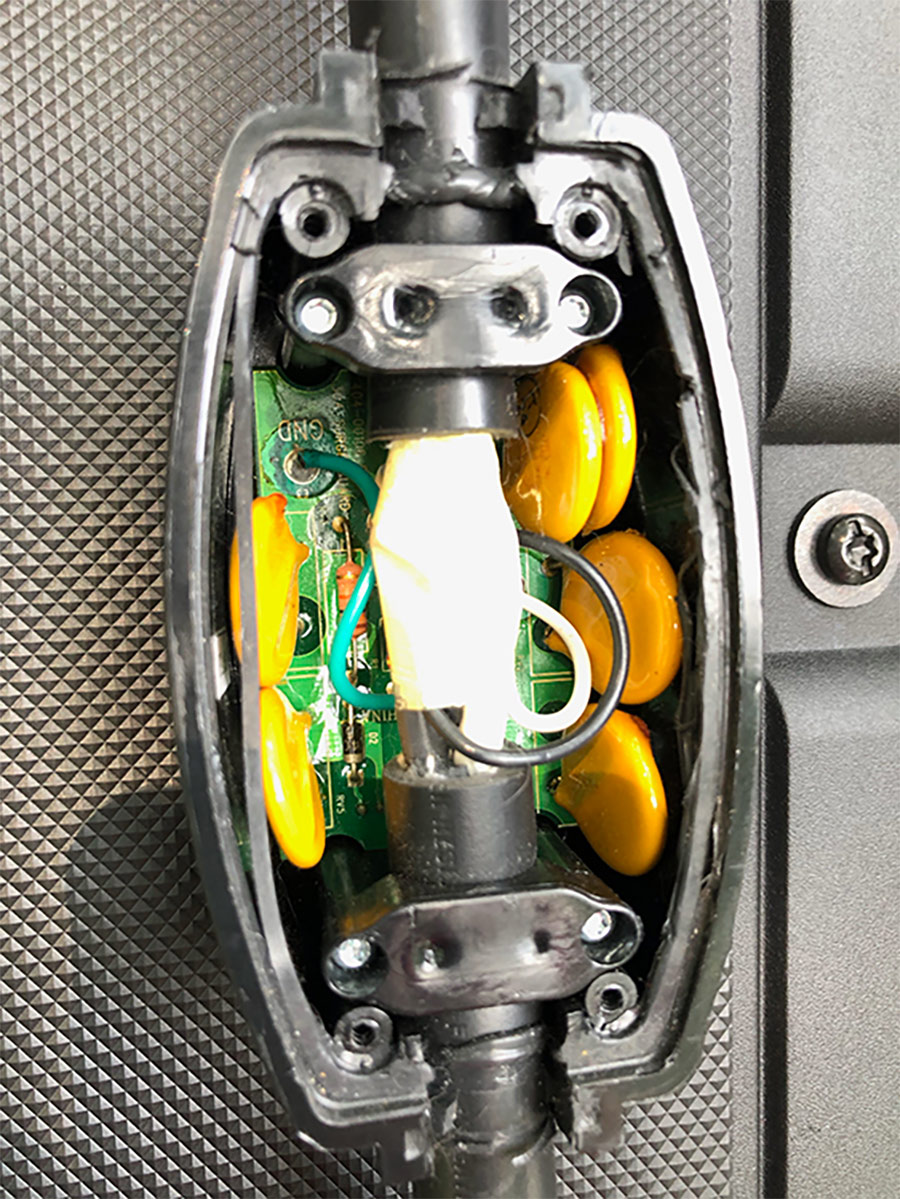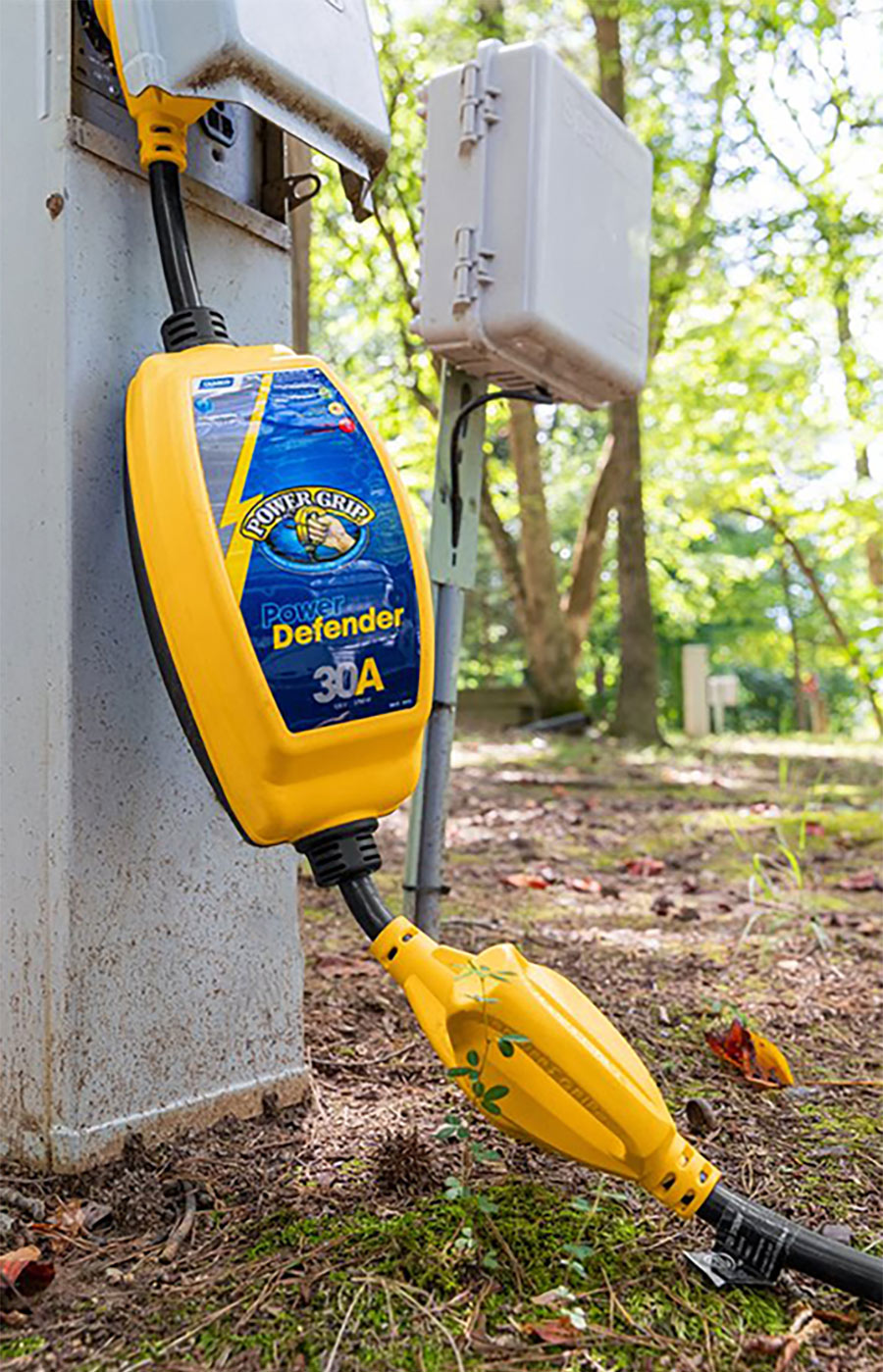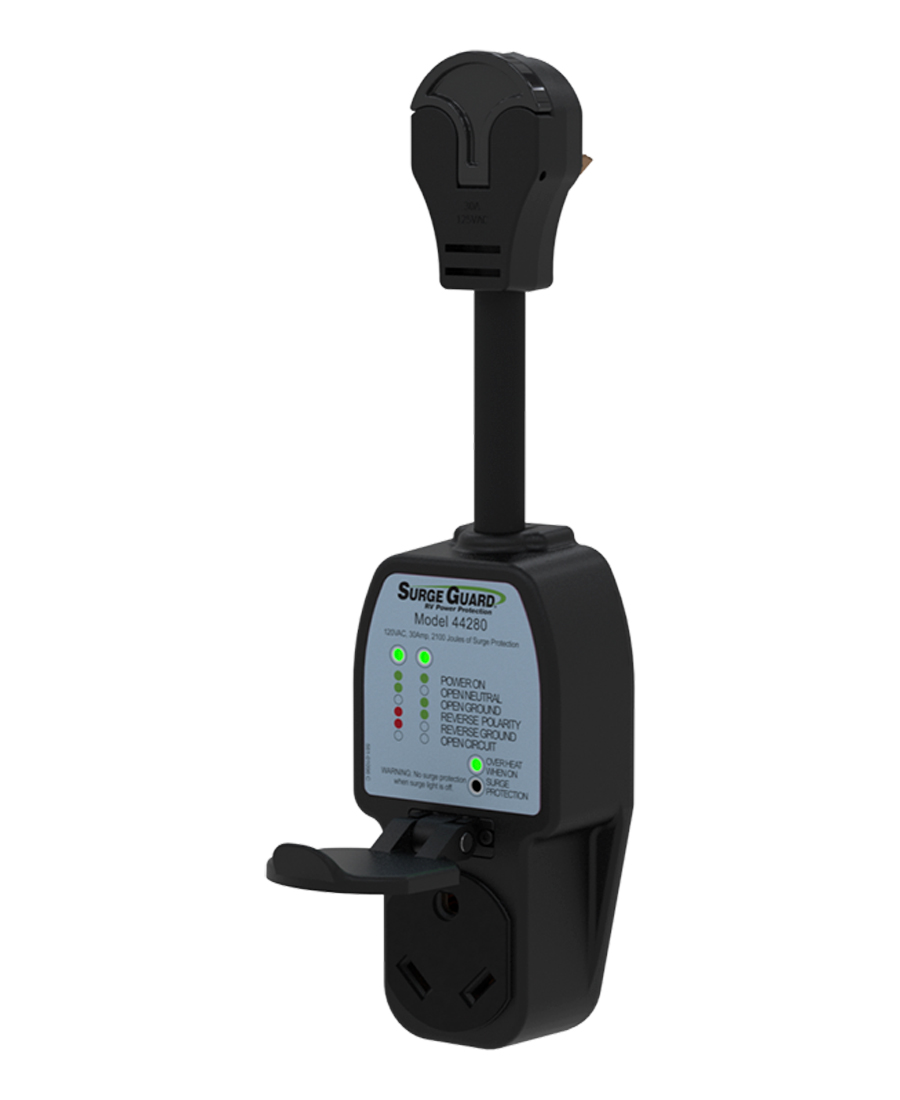Surge Protection

The most common cause of a power surge is lightning, which can strike an electrical facility or, more commonly, a power pole or lines. According to the National Electronic Manufacturer’s Association (NEMA), other external causes of power surges include utility-initiated grid- and capacitor-bank switching, where the utility company may need to switch the supply of power to another source or temporarily interrupt the flow of power to its customers to aid in clearing a fault from the system. This is often the case in the event of fallen tree limbs or a small animal causing a fault on the line. These power interruptions cause surges when the power is disconnected and then reconnected to the customer loads. These surges, or “transients,” are brief overvoltage spikes or disturbances on a power waveform that can damage, degrade or destroy electronic equipment — and can even be delivered during the normal operation of the electric power system.
At a more local level, the campground or RV park where you are staying may have an improperly wired pedestal or a problematic power supply in general, which can cause spikes and surges. Regardless of the source, a serious power surge can leap across circuit boards and can destroy both 12-volt DC and 120-volt AC systems — and everything connected to them. There are also low-level power surges that can happen several times a day, and while these won’t necessarily cause visible damage or failure they can gradually degrade internal circuitry in your RV’s appliances until they eventually fail. Anything with a microprocessor is particularly susceptible, including TVs, computers, microwaves, circuit boards and even some dishwashers and refrigerators.
These are just a few examples of why it’s so important to use a surge protector. Not to be confused with an outlet surge suppressor, which is commonly used for plugging in a computer and/or TV at home, a surge protector prevents bad power from entering the RV when hooked up. The essential ingredient in all surge suppressors are Metal Oxide Varistors (MOVs), also known as surge modules, which are sacrificial elements inside the unit with each about the size and shape of a nickel. You’ll note that all surge protectors have a joule rating, with each joule being equal to one watt-second (the energy equivalent to the power of one watt sustained for one second). For example, a surge protector with a 2,450-joule rating could withstand 2,450 surges of one joule each — but a massive surge could destroy all the MOVs, which would render the unit incapable of protecting against additional surges.



Regardless of what style you choose, a surge protector should be considered a necessity, not a luxury. The trouble and expense it can save are well worth the initial investment. We’ve compiled a list of various surge protector models (starting with portables), but some companies offer several different models and we don’t have room for every one of them here. We would encourage you to browse the different models available from the different companies and contact them with any questions you may have.
Pro Tip: A poor or loose connection can cause the plug to overheat and damage or destroy the receptacle and your portable surge protector. When plugging in to a power pedestal, always make sure that the connection is snug. Do not “wiggle” the plug loose when disconnecting, because this will eventually compromise the connection, making the surge protector susceptible to damage.
Camco Manufacturing
Camco offers just about everything an RVer might need, and now that includes surge protection. The company’s Power Grip 30- and 50-amp voltage protectors with integrated surge protection help protect the RV and appliances from high (132-volt AC) or low (102-volt AC) voltage levels and power surges of up to 2,800 joules (30 amp) or 4,200 joules (50 amp). If dangerous conditions are detected, it will automatically disconnect, reconnecting only after the normal operating conditions have been restored. Meanwhile, the voltage protection feature guards against reverse polarity, open neutral and other wiring maladies. And as the name would imply, these weather-resistant products include handles with contoured grips that make plugging and unplugging easier.
Hughes Autoformers
The Power Watchdog from Hughes Autoformers is a relatively new product line with some interesting and useful features. The company’s PWD30 (30 amp) and PWD50 (50 amp) portable models offer 2,400 and 4,800 joules of surge protection, respectively, with features like an open neutral, open ground and reverse polarity indicators, plus low/high voltage alerts, kilowatt usage monitor, weatherproof construction and more. The PWD30-EPO and PWD50-EPO models offer the same features, the primary difference being the addition of the Emergency Power Off (EPO) feature, which automatically shuts the unit off if voltage drops below 104 volts AC or goes over 132 volts AC. The EPO units also add features like a Smart Circuit Analyzer (shuts down power to the RV if a dangerous event occurs) and other cool features.

Progressive Industries
Founded by a full-time RVer, the Progressive Industries product line includes everything from basic, portable surge protection for 30- and 50-amp service to portable and hardwired complete RV power protection. Its newest models are the portable EMS-PT30X and EMS-PT50X, which include an all-weather shield assembly, rugged pull handle, an improved secure locking bracket and an integrated scrolling display, all wrapped in a tough Lexan housing. Progressive’s EMS (Electrical Management System) helps protect your RV against voltage fluctuations, power surges and incorrectly wired shore power and features over/under voltage protection, open ground/open neutral/reverse polarity detection and protection, Previous Error (PE) code, A/C frequency protection and more.


The EMS-LCHW30 30-amp and EMS LCHW50 (50 amp) are the company’s hard-wired units offering similar protection as portable units listed above, but are permanently wired into the RV. Modular design makes repairs very user friendly, according to the company, and the user can bypass the computer circuit in the EMS in the event of a failure, thereby allowing power back to the RV. If mounting in an area where the readout is not readily visible, Progressive also offers the EMS-HW30C and EMS-HW50C, which have the additional benefit of a remote display.

Surge Guard (Southwire)
Southwire is not only a manufacturer of RV surge protectors, but also a family-owned business that manufactures half of the cable used in the transmission and distribution of electricity across America. Based in Carrollton, Georgia, the company claims that one out of every three homes in the country contains its electrical wiring — so it’s safe to say it knows something about electricity. The company also offers RV cords and adapters and Shoreline Reels cord and hose reels to help manage RV hookups.
Perfect for pop-ups and travel trailers, according to the company, the model 44280 and 44290 surge protectors feature enhanced diagnostics and test for/indicate open neutral, open ground, reverse polarity, open circuit/no power, surge protection status and overheating plug/receptacle. The 30-amp model offers 2,100 joules of surge protection, while the 50-amp model provides 4,200 joules, and both models offer Easy-T-Pull plug handles, an easy-to-read LED fault chart and increased receptacle brass thickness to reduce heat.





Offering full protection from power surges, open ground, open neutral, low/high voltage, reverse polarity and more, 35530 and 35550 are hard-wired surge protectors that continuously monitor and indicate voltage amp/draw and surge failure. An optional remote power monitor LCD display (part number 40300, sold separately) displays voltage and amp draw and features a joystick for easy screen navigation.
Camco Manufacturing
(800) 334-2004
camco.net/home
Hughes Autoformers
(888) 540-1504
hughesautoformers.com
Progressive Industries
(800) 307-6702
progressiveindustries.net
Surge Guard (Southwire)
(800) 780-4324
rvpower.southwire.com
Already a Subscriber? Click here for Access to the Full Issues.

